| F.K.55 | |
|---|---|
 | |
| Role | Fighter |
| National origin | Netherlands |
| Manufacturer | N.V. Koolhoven Vliegtugen |
| First flight | 20 June 1938 |
| Number built | 1 |
The Koolhoven F.K.55 was a Dutch fighter prototype of the 1930s, which did not progress beyond the prototype stage.
| F.K.55 | |
|---|---|
 | |
| Role | Fighter |
| National origin | Netherlands |
| Manufacturer | N.V. Koolhoven Vliegtugen |
| First flight | 20 June 1938 |
| Number built | 1 |
The Koolhoven F.K.55 was a Dutch fighter prototype of the 1930s, which did not progress beyond the prototype stage.

Design of a Koolhoven high-performance aircraft first started late in 1937. The result, finished in early 1938 was the F.K.55, a single-seat fighter of radical design with contra-rotating propellers and an engine housed behind the pilot. It had initially been proposed to do away with ailerons on the wings, and replace them with "slot-spoilers" for lateral control, however this idea was abandoned early in the project. [1]
Of mixed metal and wood construction with wooden wings, the F.K.55's front fuselage was made of steel tube while wood formed the tail and rear fuselage. Its 640 kW (860 hp) Lorraine Pétrel engine afforded only just enough power to take off and to stay in flight. The production version would have used the more powerful 900 kW (1,200 hp) Lorraine 12R Sterna engine but this never happened. [1]
The aircraft flew for the first time on 30 June 1938. It flew for two minutes then landed. Underpowered, the FK.55 was cancelled in the same year. [1]
Data from [1]
General characteristics
Performance
Armament
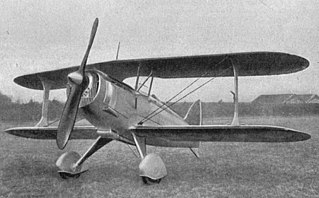
The Blériot SPAD S.510 was a French single-seat, single-engined biplane fighter aircraft. First flying in 1933, 60 were built for the Armée de l'Air, entering service in 1936. The type remained in service as a fighter-trainer at the start of the Second World War. It was the last French biplane fighter to enter production.

The Curtiss F7C Seahawk was a carrier-capable biplane fighter aircraft of the United States Navy Marine Corps in the late 1920s and early 1930s.
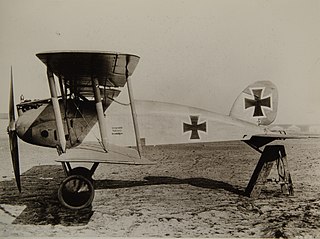
Albatros D.IX was a German prototype single-seat fighter built in early 1918. It differed from previous marks by using a simplified fuselage with a flat bottom and slab sides. The wings and tail were similar to those of the Albatros D.VII. Power was provided by a 130 kW (170 hp) Mercedes D.IIIa engine. The D.IX was armed with twin synchronised 7.92 mm (0.312 in) LMG 08/15 machine guns.
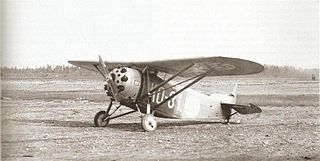
NVI F.K.31 was a Dutch designed parasol wing two seat reconnaissance-fighter, which was developed in the 1920s by Frederick Koolhoven. The aircraft saw some service in the Finnish Air Force.

The Armstrong Whitworth F.K.10 was a British two-seat quadruplane fighter aircraft built by Armstrong Whitworth during the First World War. While it was ordered in small numbers for the Royal Flying Corps and Royal Naval Air Service, it was not used operationally. It is one of the few quadruplane aircraft to reach production.

The Savoia-Marchetti SM.91 was a two-seat, twin-engined, Italian heavy fighter prototype, designed to compete in a 1942 revision to a long-range fighter-bomber contract offered by the Regia Aeronautica to Italian aircraft companies in 1938. The original 1938 specification yielded the Savoia-Marchetti SM.88, which the SM.91 was largely based on.
The Schütte-Lanz D.III was a German fighter prototype during World War I. It participated in the first Idflieg D competition at Adlershof, Germany in January and February 1918. It was a conventional single-bay staggered biplane with N-type interplane struts. Of wooden construction with fabric skinning, the D.III revealed an unspectacular performance and production was never continued.

The BAT F.K.25 Basilisk was a prototype British fighter aircraft of the First World War. A single engined biplane intended to meet a requirement to replace the Sopwith Snipe, the Basilisk was unsuccessful, only three being built.
The Heinkel Doppeldecker 43 was a prototype German fighter aircraft of the 1930s. A single-engined, single-seat biplane, the HD 43 was designed to meet a secret German Reichswehr requirement for a single-seat fighter. It had two-bay wooden wings with a steel-tube fuselage, and was powered by a 750 hp (600 kW) BMW VI engine. The single prototype flew in 1931.

The Caproni Vizzola F.6 was a World War II-era Italian fighter aircraft built by Caproni. It was a single-seat, low-wing cantilever monoplane with retractable landing gear. Only two prototypes were built, one designated F.6M and the other designated F.6Z.
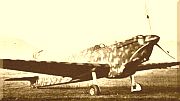
The Caproni Ca.335 Maestrale (Mistral) was an Italian single-engined two-seat fighter-bomber/reconnaissance aircraft of the 1930s.

The SNCAO 200, sometimes written CAO.200, was a prototype French single seat fighter aircraft of the 1930s. It was a single engined monoplane intended to compete with the Dewoitine D.520, but was unsuccessful, only a single example being built.

The Nieuport-Delage NiD 120 series was a series of French single-seat parasol monoplane fighter aircraft of the 1930s. It was built in a number of versions, fitted with various types of engines, with six aircraft designated NiD 123 being sold to Peru.
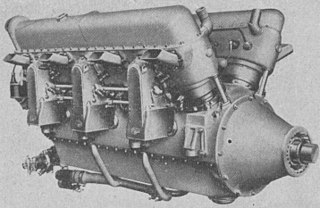
The Lorraine 12H Pétrel was a French V-12 supercharged, geared piston aeroengine initially rated at 370 kW (500 hp), but later developed to give 640 kW (860 hp). It powered a variety of mostly French aircraft in the mid-1930s, several on an experimental basis.

P.Z.L. P.8 was a fighter designed by Ing. Zygmunt Puławski and constructed by P.Z.L. from 1930.

The Loire-Nieuport 161 was a single-seat, single-engine, all-metal, low-wing monoplane fighter designed and built in France in 1935 to compete for a government contract. Accidents delayed its development and only three prototypes were completed.
The Wibault Wib 1, Wib C1 or, later, Wib 1 C1 was a French World War I single seat, single engine fighter aircraft prototype. Flown near the end of the war, it was not selected for production.

The Dewoitine D.25 was a single-engine, two-seat, parasol-wing fighter aircraft built in France in the 1920s. The 1925 French two-seat fighter programme was cancelled before any orders were placed, but four examples were exported to Argentina.
The Potez 230 was a French lightweight single-seat, single-engined fighter aircraft. One prototype was built and flew in 1940, but no production followed, with the prototype being captured and shipped to Germany for study.
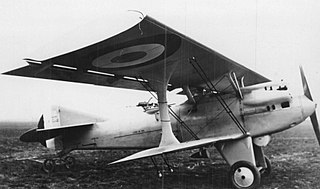
The Villiers XXIV or Villiers 24 CAN2 was a French army night fighter most notable as the first French military aircraft to be fitted with leading edge slats.